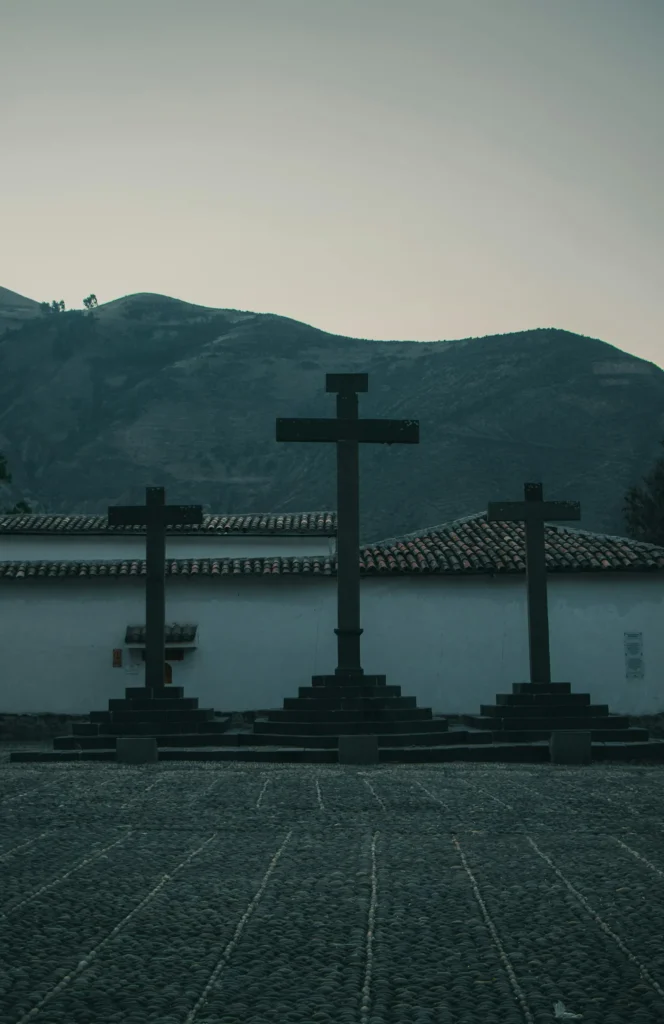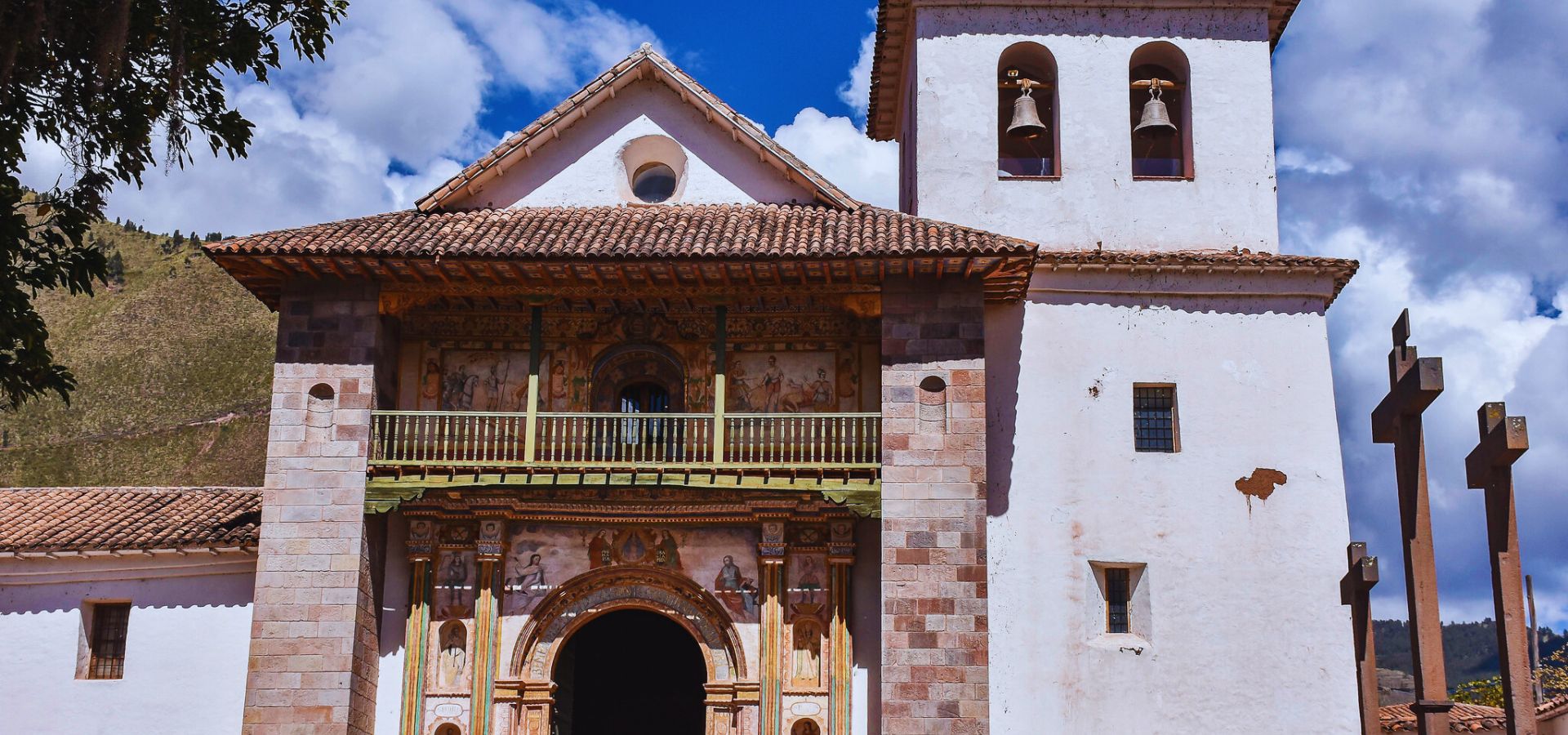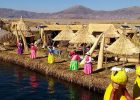Andahuaylillas, located 40 kilometers from Cusco, is famous for its Church of San Pedro Apóstol, known as the Sistine Chapel of America due to its impressive Baroque frescoes. This church, built in the 17th century, merges Catholic and Indigenous traditions in its decoration, featuring a gold-leaf-covered ceiling, an ancient pipe organ, and paintings from the Cusco School.
It is part of the Andean Baroque Route, which includes other nearby churches. To get there, you can take a bus from Cusco to Urcos or join a tour. Andahuaylillas is a must-visit destination for those looking to explore Peru’s colonial art and history.
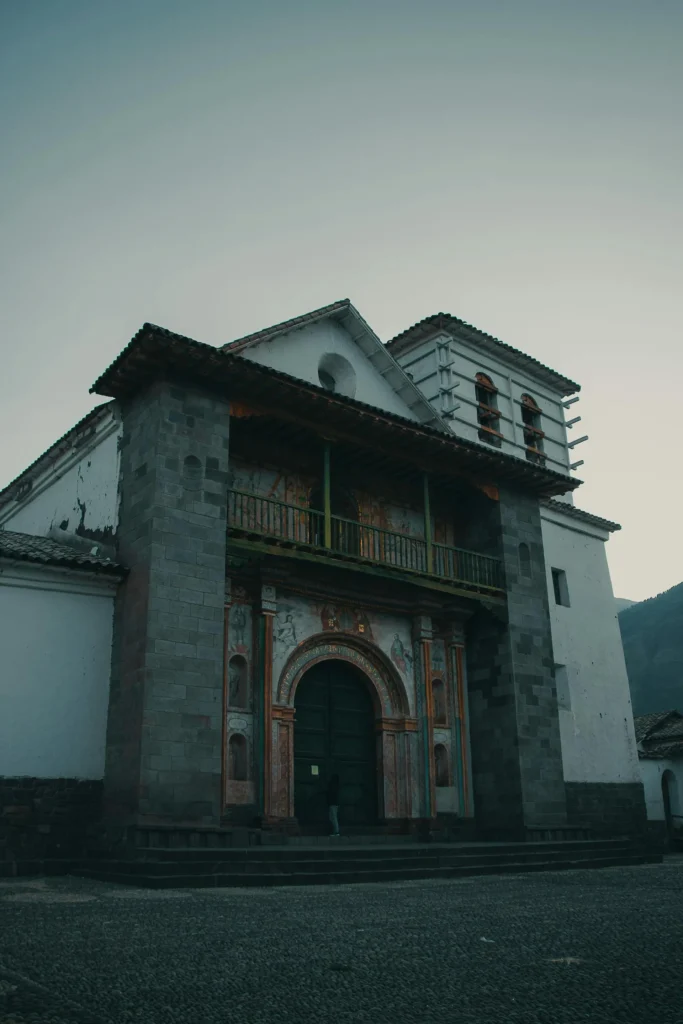
Explore Andahuaylillas and its Church of San Pedro Apóstol
History and Location of the Town of Andahuaylillas
Located in the province of Quispicanchi, about 45 kilometers southeast of the city of Cusco, the town of Andahuaylillas has remained a living example of Andean and colonial traditions. Founded during the Viceroyalty period, this small town preserves a peaceful and picturesque atmosphere, with cobbled streets and adobe houses that evoke times past.
Surrounded by beautiful mountainous landscapes and valleys, Andahuaylillas has managed to preserve its ancestral customs, maintaining a strong connection to its cultural heritage.
The Church of San Pedro Apóstol: A Baroque Treasure
The main attraction of Andahuaylillas is, without a doubt, the Church of San Pedro Apóstol, built in the 16th century. This church has earned the title of “Sistine Chapel of America” thanks to the stunning frescoes that adorn its interior, created by artists from the Cusco School.
These murals, along with the gold-leaf-covered ceiling, make this temple a unique example of the fusion between European and Indigenous traditions. The church reflects the influence of Baroque art in colonial Peru but also showcases a cultural syncretism where Andean beliefs merged with Christianity. Additionally, its ancient pipe organ and carved wooden sculptures complement the beauty of the place.
Andahuaylillas is not only a site of great historical and artistic value but also a place that invites visitors to delve into Cusco’s history and the rich heritage left by Spanish colonization in the region. For those seeking an authentic experience beyond the most touristy routes, Andahuaylillas offers a journey back in time to the heart of Andean culture and Peruvian Baroque.
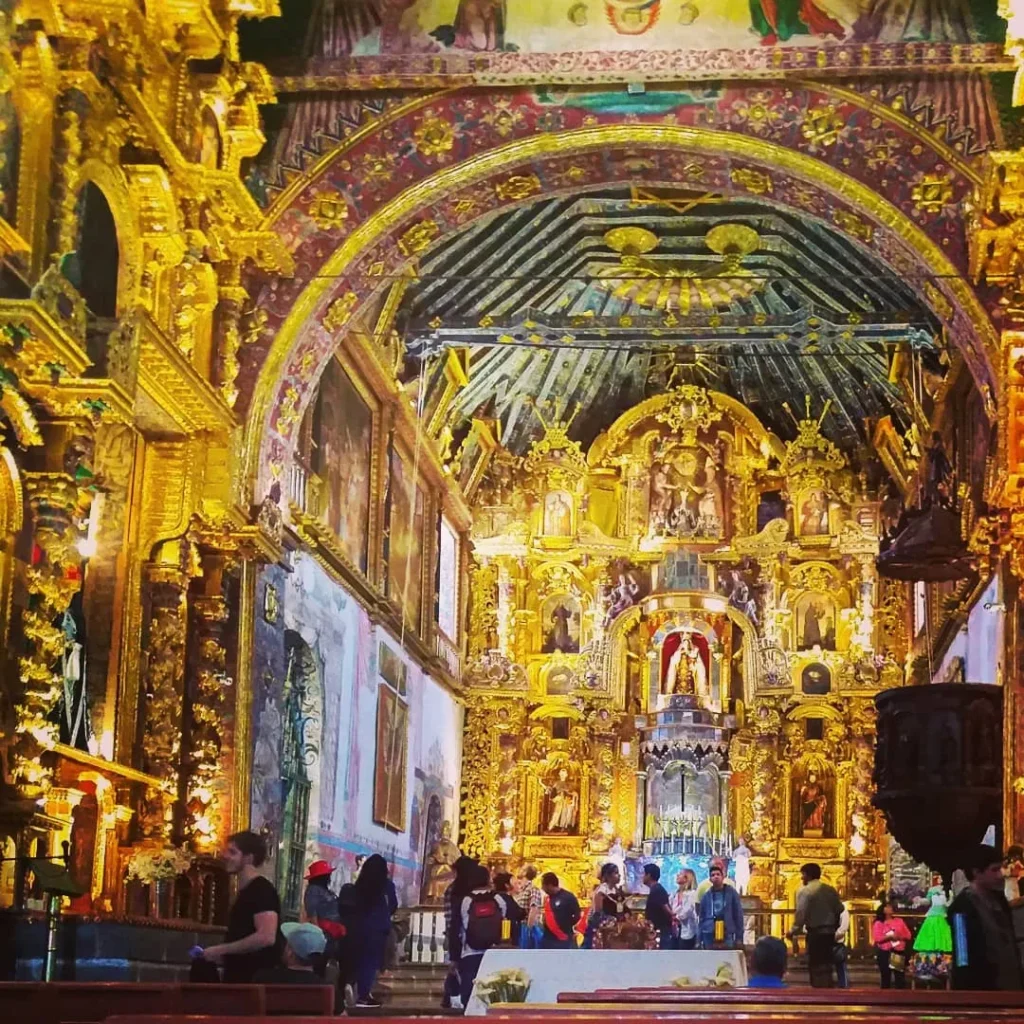
The Church of San Pedro de Andahuaylillas: Cultural Heritage in Cusco
Architecture and Colonial Art in the Church
The Church of San Pedro de Andahuaylillas, built between the late 16th and early 17th centuries, is a prominent example of Andean Baroque. Its exterior façade is simple and austere, following the Spanish colonial style, which contrasts with the richness of its interior.
Upon entering, visitors are greeted by lavish decoration, leading many to compare it to the Sistine Chapel of America. The walls and ceilings are adorned with frescoes depicting biblical scenes and reflecting the fusion of Catholic and Indigenous traditions. The gold-leaf-covered ceiling stands out for its intricate design and brilliance.
The main altarpiece, in Baroque style, is a centerpiece that showcases the skill of local artisans. Additionally, the church houses a pipe organ considered one of the oldest in America and sculptures from the Cusco School that illustrate the cultural syncretism of the time.
This combination of architectural and artistic elements makes the church a living testimony to the history and culture of colonial Peru.
Frescoes and Artistic Details of the Interior
The interior of the Church of San Pedro Apóstol is a true masterpiece, where the influence of European traditions merges with Andean symbols and worldview. The frescoes adorning its ceilings and walls were painted by local artists trained in European techniques but who incorporated elements of their ancestral culture.
One of the most striking frescoes is the famous “Path to Heaven and Hell,” a visual representation showing the destiny of souls according to Christian tradition but with a unique touch reflecting the religious syncretism of the colonial era. This image, covering a large part of the vault, invites visitors to reflect on life, death, and salvation.
In addition to the frescoes, the church houses religious paintings and sculptures of great value, many of which were created by artists from the Cusco School, an artistic movement that emerged in Cusco during the colonial period. This style is recognized for its vibrant use of colors and its ability to blend religious themes with Andean symbolism.
Every corner of the church is filled with artistic details that not only tell biblical stories but also reflect the cultural and religious richness of colonial Peru.
Location of the Sistine Chapel of America and How to Get There
Route and Transportation Options from Cusco
To reach Andahuaylillas from Cusco, there are several alternatives to suit different needs and budgets. Below are the available options:
1. Public Bus
Pros:
- Affordable: Buses are a low-cost option.
- Frequent Departures: They regularly leave from Avenida Huayruropata in Cusco.
- Local Experience: Allows interaction with residents and insight into daily life.
Cons:
- Limited Comfort: Seats may be basic and space reduced.
- Travel Time: The journey can take about an hour, depending on traffic.
- Fixed Schedules: Less flexibility compared to private options.

2. Taxi or Private Transportation
Pros:
- Comfort: More spacious and comfortable vehicles.
- Flexibility: Possibility to make stops along the way and adjust the itinerary.
- Speed: Shorter travel time without frequent stops.
Cons:
- Cost: More expensive than public buses.
- Availability: Requires advance booking, especially in high season.
3. Organized Tour

Pros:
- All-Inclusive: Transportation, guide, and visits to other sites like Tipón and Pikillaqta.
- Additional Information: Expert guides provide historical and cultural context.
- Convenience: No logistical worries; everything is planned.
Cons:
- Higher Cost: Usually more expensive than individual options.
- Less Flexibility: Fixed itinerary and time at each location.
- Group Dependency: The pace and stops depend on the group and the guide.
Each option offers a different perspective of the journey, allowing you to choose the one that best suits your preferences and needs.
Tours and Activities to Visit the Sistine Chapel of America
For those who want to deepen their understanding of the history and art of the Church of San Pedro Apóstol in Andahuaylillas, there are various options that enhance the visitor experience.
Guided Tours with MachuPicchu Wayna
MachuPicchu Wayna offers specialized tours led by expert guides in history and art. These professionals provide detailed explanations of the frescoes, altarpieces, and symbolism of the church’s decoration.
Additionally, they share information about local traditions and the significance of Andahuaylillas in the Cusco region. Opting for a guided tour with MachuPicchu Wayna ensures an educational and enriching experience beyond a simple visit.
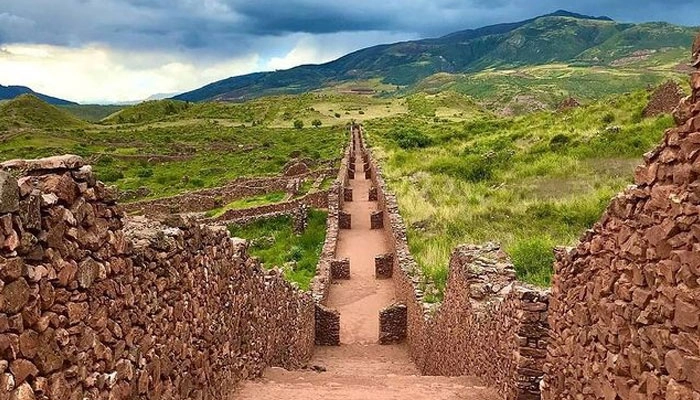
Complementary Activities in the South Valley
Besides visiting the church, Cusco’s South Valley offers other cultural and natural attractions. For example, the half-day South Valley tour – Tipón Pikillaqta allows visitors to explore Tipón’s fascinating agricultural system and the pre-Inca city of Pikillaqta, immersing themselves in the history and beauty of these ancient civilizations.
These complementary activities enrich the visit to Andahuaylillas, offering a more complete view of Cusco’s culture and history.
What to See and Do in Andahuaylillas
- Interact with Locals: The residents of Andahuaylillas are known for their hospitality. Take the opportunity to learn about their customs and traditions.
- Church of San Pedro Apóstol: The town’s main attraction, known as the “Sistine Chapel of America,” famous for its frescoes and Andean Baroque altarpieces.
- Walk Through the Town’s Streets: Enjoy a stroll through the cobblestone streets of Andahuaylillas, transporting you to colonial times.
- Visit the Main Square: Relax in the town’s square, surrounded by typical architecture and places to observe local life.
- Handicrafts: Shop for typical products like textiles, ceramics, and crafts made by local artisans.
- Visit Tipón & Pikillaqta: Explore these nearby archaeological sites to complete your historical experience.
